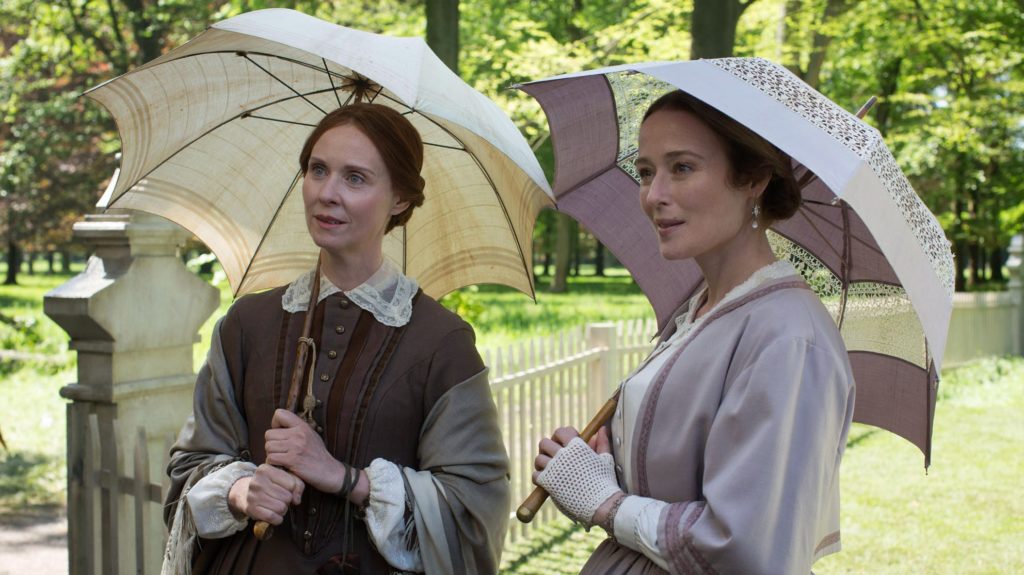
I saw Terence Davies’ film A Quiet Passion (2016) the other day. It was the most thoroughly engaging cinematic experience I have had in a theater in the last year. Davies, true to form, grounds his subject within the context of the family unit and, within this context, examines the effects of the passage of time, of human mortality. Unlike his best known works Distant Voices, Still Lives (1988) and The Long Day Closes (1992), A Quiet Passion focuses on a historical celebrity (Emily Dickinson, played by Cynthia Nixon) and is set in the United States as opposed to Liverpool.
A Quiet Passion echoes heavily with the influence of Jean-Marie Straub and Danièle Huillet in its privileging of duration and silence as a means of revealing the interior of characters without relying upon such tired devices as voice-overs. When Davies does employ voice-overs, it is always a recitation of one of Dickinson’s poems as an auditory counterpoint to the visual of the narrative, never as a means of taking the psychological elements of character and perverting it into exposition.
There is also a hint of latter day Robert Bresson to Davies’ sound design in A Quiet Passion, particularly if one recalls Jonathan Rosenbaum’s review of Bresson’s Lancelot Of The Lake (1974). If one looks at the scene where Emily Dickinson, her sister Vinnie (Jennifer Ehle), and the Wadsworths (Eric Loren and Simone Milsdochter) have tea together one will immediately notice how high the sounds of glasses clinking have been brought up in the mix. These sounds lend a sense of tension to the scene while also making the space more visceral. This tactic prevails throughout A Quiet Passion.
Visually, Davies is at his best in two sequences. First, in showing the passage of time from Emily Dickinson’s adolescence to adulthood via a transformative portrait. Davies seizes the opportunity of each member of the Dickinson family sitting for their portrait as a means of moving the narrative forward in time while also drawing our attention to the technical limitations of 19th century photography and subverting the aesthetic conditions of photography itself. The second sequence is Emily Dickinson’s funeral procession. The unusual perspective born out of unorthodox camera placement, coupled with eerie tracking motions and a detached voice-over lend the scene gravitas without giving way to sentimentality.
